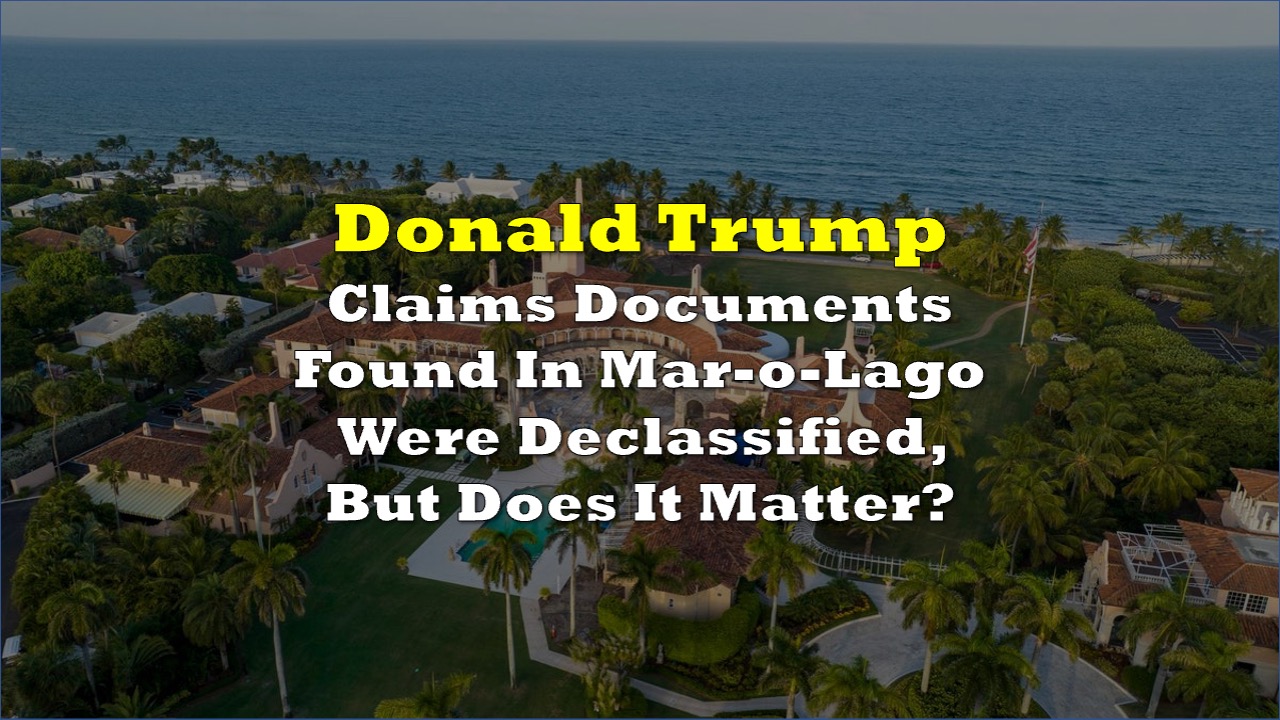The recently unsealed seven-page document which includes the warrant to search former President Donald J. Trump’s Mar-o-Lago property in Florida reveals that agents of the Federal Bureau of Investigation were able to retrieve 11 sets of classified documents, among other things.
The three-page list includes four sets of top secret documents, three sets of each of secret and confidential documents, and a set marked “Various classified/TS/SCI documents.” Also identified in the list were the Executive Grant of Clemency for known Trump ally Roger Jason Stone, Jr., and some “info re: President of France.”
The list, understandably, did not provide further information about the substance of the documents retrieved. And as of this writing, it remains unclear whether or not these documents were obtained while Trump was still in office, or as he was leaving the White House in 2020.
Trump has earlier said in a statement that these documents have been declassified. But this assertion, even if it were true — more on this in a bit — will not seem to help the former president.
The search warrant was enacting laws on the illegal possession of “physical documents and records constituting evidence, contraband, fruits of crime, or other items,” in violation of sections 793, 1519, or 2071 under Title 18 of the United States Code.
Section 2071 makes the removal or concealment or destruction of documents “filed or deposited with any clerk or officer of any court of the United States, or in any public office, or with any judicial or public officer of the United States” a crime, with no reference to these documents needing to be classified to qualify. Each offense is punishable by up to three years in prison.
Section 1519 makes it a crime to destroy or conceal documents or records “with the intent to impede, obstruct or influence the investigation or proper administration of any matter within the jurisdiction of any department or agency of the United States.” Each offense is punishable by up to 20 years in prison.
Section 793, better known as the Espionage Act, makes it a crime to obtain, without authorization, “any sketch, photograph, photographic negative, blueprint, plan, map, model, instrument, appliance, document, writing, or note of anything connected with the national defense.” Each offense is punishable by up to 10 years in prison.
The Espionage Act was enacted by Congress during World War I, long before President Harry S. Truman’s administration passed the executive order to implement the executive branch’s modern system of classifying documents.
Moreover, Democratic Representative Adam Schiff, head of the House Intelligence Committee, said in an interview on Face of the Nation on Sunday that he has seen no evidence that shows “whether there was any effort during the presidency to go through the process of declassification.”
The classification markings on the documents would have also been updated if they had been declassified.
Allies of the former president have downplayed Trump’s illegal possession of documents from his time at the White House, saying that the papers were kept as keepsakes, consistent with Trump’s habit of collecting memorabilia.
Information for this briefing was found via the sources mentioned. The author has no securities or affiliations related to this organization. Not a recommendation to buy or sell. Always do additional research and consult a professional before purchasing a security. The author holds no licenses.









